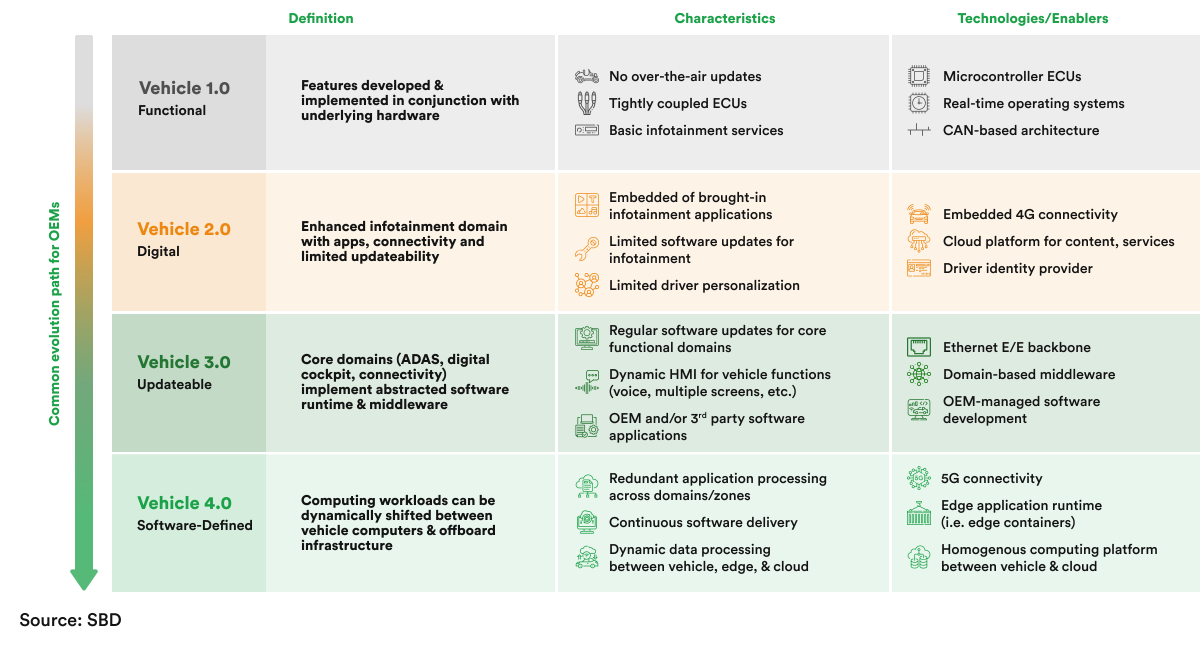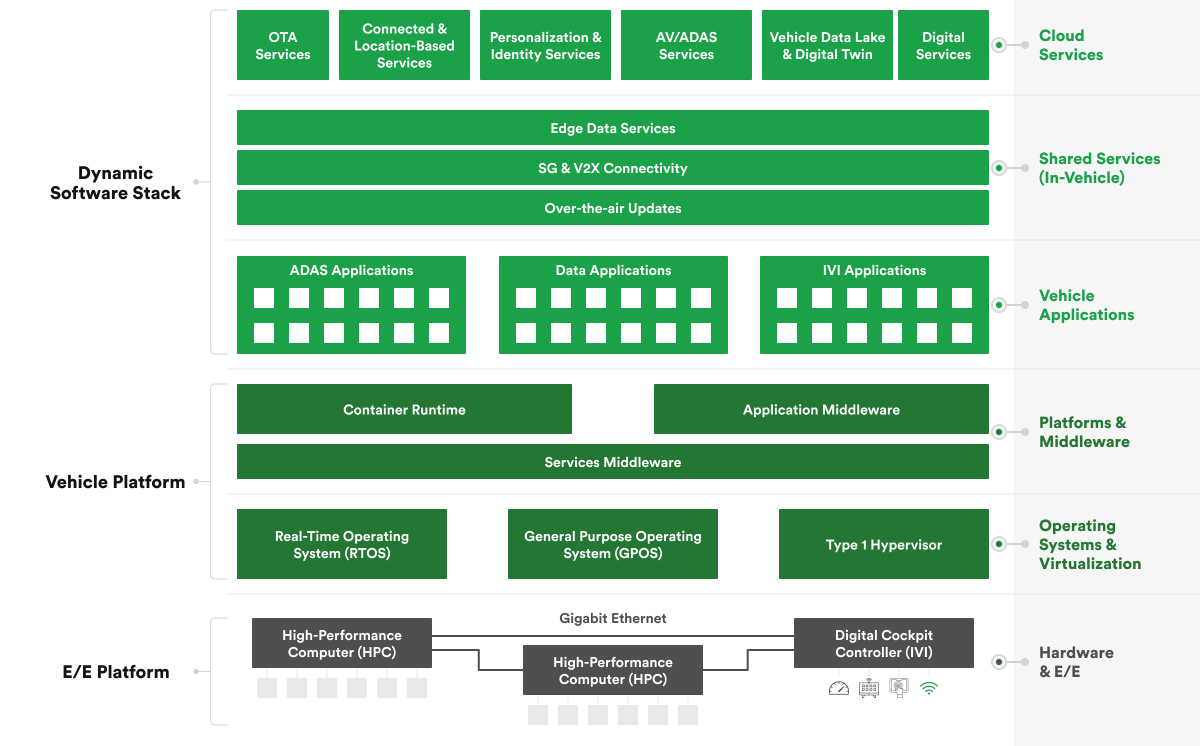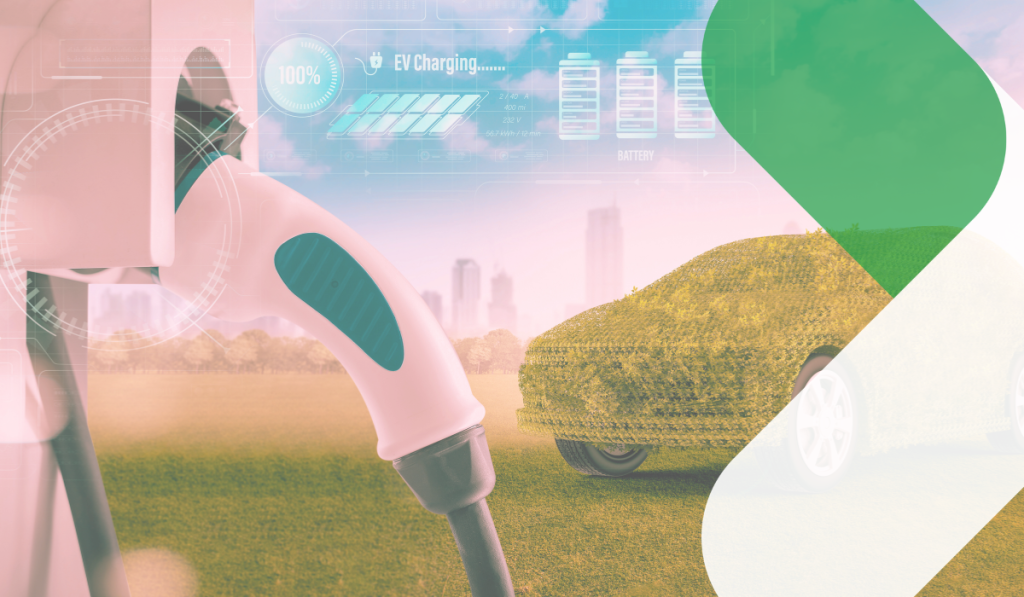
AI-Powered LiDAR: A New Era of Perception
How AI and ML enhance LiDAR technology by overcoming data processing challenges, enabling advanced applications in autonomous systems, robotics, and 3D mapping, and more.
According to McKinsey, the automotive software market will be worth $462 billion by 2030, growing at a 5.5% compound annual growth rate since 2019. SDVs are moving from the peripheries of exciting technologies to the front and center. Within the world of SDVs is a crucial and exciting subcategory: digital cockpits. Cockpits are arguably the most important part of a vehicle, and myriad cockpit solutions allow businesses to strengthen and secure SDVs.
SDV solutions and cockpit transformation projects are completely redefining what vehicles and drivers are capable of. However, connected vehicles, digital cockpit solutions, and all other SDV innovations also introduce potent challenges that businesses must mitigate. Examples of these challenges include vehicle cybersecurity, systems integration, and application development.
This article focuses on the key technologies and benefits around SDVs and what to consider when investing in SDV solutions such as cockpit transformation projects.
Before delving into key technologies and their benefits, let us briefly answer three fundamental questions about SDVs:
An SDV is an evolution of other software-defined devices and technologies. Here, enterprises integrate a software layer into an automobile setting to establish new sensor-based features, upgrade digital interfaces, negate hardware complexities, drive efficiency, and introduce upgradability. There are numerous software-defined vehicle use cases across sectors.
Fully autonomous and semi-autonomous vehicles are examples of SDVs. While degrees of autonomy may vary, most autonomous vehicles assess their environments with advanced sensor-based technology and utilize sensor data with artificial intelligence (AI) and machine learning (ML) capabilities.
A digital cockpit is a software-defined dashboard that helps drivers access a range of vehicular safety, performance, and entertainment features. Enterprises are exploring digital cockpit solutions in all types of vehicles: consumer, industrial, and military.

Vehicle Evolution: From Functions to Services
Businesses can unlock immense opportunities and benefits by embracing software-defined vehicle architectures. Here are 7 of the most important SDV solutions of our times.
Most people know what OTA updates are because they receive them on smartphones, laptops, digital cameras, and other connected devices. In an SDV context, OTA software updates ensure the consistent and iterative improvement of vehicular safety and performance features. Drivers can receive and respond to OTA updates from their cockpit, much like how we update operating systems on personal devices.
Using technologies such as digital twins and extended reality (XR), virtualization allows companies to affordably design, develop, prototype, and validate new physical and virtual SDV and digital cockpit components without making hardware investments or getting under the hood of an actual vehicle.
In the realm of software-defined vehicles (SDVs), edge computing emerges as a pivotal technology, enhancing the capabilities and efficiency of autonomous systems. By processing data closer to its source—right at the vehicle itself—edge computing drastically reduces latency and improves response times. This immediate data processing is crucial for real-time decision-making in autonomous driving, where every millisecond counts. It enables vehicles to analyze and act upon critical information locally, from traffic conditions to sensor data for obstacle avoidance, without the need for constant cloud connectivity. This not only streamlines the operation of SDVs but also bolsters their safety features, ensuring that decisions are made swiftly and reliably, even in areas with poor connectivity. Furthermore, edge computing supports advanced features such as real-time analytics, local data caching, and immediate content delivery, enhancing the overall driving experience and vehicle performance.
Autonomous vehicle companies use myriad cloud services as pillars for their software-defined vehicle architecture. Most companies are moving from on-premises data centers to cloud-based platforms, which means cloud connectivity is one of the most important attributes and technologies associated with SDVs. Seamless performance across digital cockpits of connected vehicles and backend infrastructures is only possible with cloud technology.
AI is one of the central protagonists in the story of SDV solutions. Connected vehicles rely on real-time sensor data analyses and data from other disparate external sources. AI mechanisms analyze data at subsecond speeds to report information to the vehicle’s cockpit. For example, if a camera in the car catches the driver not paying attention to the road, AI mechanisms can immediately sound an alert.
In some ways, connected vehicles are IoT devices. But connected devices are also full of smaller IoT technologies. For instance, all mechanisms that either deliver or receive data to or from digital cockpits are IoT devices. IoT technologies in autonomous vehicles include smart cameras, instrument clusters, steering wheels, infotainment dashboards, and heads-up displays (HUDs). Without these IoT technologies, an SDV isn’t an SDV.
A digital cockpit and its instrument clusters form an all-in-one console for drivers. It melds the worlds of entertainment, security, safety, and performance into a unified real-time platform. Any unified, real-time platform requires immense speeds and minimal latency for data transfers. 5G connectivity is essential to running real-time applications and technologies in digital cockpits. Without 5G, digital cockpits may lag, and a suboptimal digital cockpit is a risk in itself.
Numerous sensors in connected vehicles collect vast amounts of data. AI/ML tools then process and analyze that data to generate actionable insights. A lot of this information is accessible to drivers in their digital cockpits. Amongst these insights are invaluable predictions about vehicle health and maintenance needs. While certain IoT sensors on cars provide details on mechanical maintenance needs, a software-defined vehicle architecture calls for another kind of predictive maintenance, one that involves warnings and updates about software improvements, cybersecurity vulnerabilities, and bugs.

The SDV Technology Stack
Key stakeholders and decision-makers in both autonomous vehicle companies and disparate enterprises that require SDV solutions have difficult choices to make, especially when it comes to investing in cockpit transformation projects. No matter how frugal a cockpit transformation project is, company resources are valuable, and no leader can afford to make suboptimal investments.
The success of an SDV solution or cockpit transformation project depends on the quality of collaboration between an enterprise and its tech partner. For simple projects, a well-reputed tech partner with strong personnel, high availability, AI/ML expertise, and diverse experience can oversee innovations themselves. However, for complex undertakings such as cockpit transformation projects, businesses must work with a tech partner that either possesses or has access to an interconnected arsenal of technical, software, and security tools and capabilities. A tech partner with a robust ecosystem participation strategy can significantly help cockpit transformation projects.
Decision-makers must keep cybersecurity in mind while investing in SDV solutions and cockpit transformation projects. Cars and cybersecurity were once on two ends of the spectrum. The connected vehicle phenomenon collided with the two worlds and introduced cybersecurity threats. Many high-profile autonomous vehicle companies have suffered data breaches. Considering the average cost of a data breach was an alarming $4.45 million in 2023 (as per IBM), autonomous vehicle companies must elevate cybersecurity to one of their main priorities in cockpit transformation projects.
rinf. tech’s collaboration with NXP® Semiconductors, a global semiconductor company, to develop an SDV cybersecurity application is an excellent example of why businesses must choose tech companies and software developers that are in solid partnership ecosystems. The technology and Security Agent of another industry leader, the cybersecurity company Bitdefender, was the foundation upon which rinf.tech and NXP® Semiconductors built this SDV solution. By choosing a tech partner like rinf.tech, an autonomous vehicle company or any other organization can access the capabilities of multiple world-class experts in the same partnership ecosystems.
Digital cockpits are a microcosm of exciting SDV solutions and innovations. Numerous cockpit and SDV-related technologies and trends are at the forefront of these radical innovations. They include OTA updates, virtualization, cloud connectivity, AI and ML, IoT, 5G, and software-centric predictive maintenance. While these are all invaluable technologies to leverage for digital cockpit transformation projects and SDV solutions innovations, enterprises require a tech partner to oversee these investments and bring rewards to fruition.
Choosing a tech partner to invest in for a digital cockpit transformation project is trickier than it seems. The SDV threat landscape now contains a range of cyberattacks in addition to operational and road safety challenges. Therefore, enterprises must choose tech partners who are part of vibrant, collaborative ecosystems. By choosing partners like rinf.tech, businesses can access a wide and varied range of SDV and digital cockpit innovation capabilities, personnel, and backend infrastructures.
Regardless of your software-defined vehicle use case, rinf.tech can provide unparalleled support.

How AI and ML enhance LiDAR technology by overcoming data processing challenges, enabling advanced applications in autonomous systems, robotics, and 3D mapping, and more.

Offering insights into how the latest AI advancements will impact consumers, manufacturers, and the broader environment in 2025 and beyond.

Showcasing the environmental and economic benefits of integrating sustainable materials and robust recycling practices into the automotive value chain.